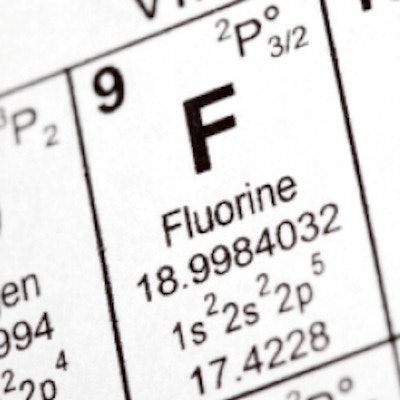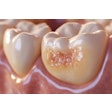
A new report from the U.S. Centers for Disease Control and Prevention (CDC) casts doubt on the reliability of previously reported data that suggested that dental fluorosis prevalence with age increased in the U.S. during the 2011 to 2014 period, compared with the 2001 to 2004 period.
Researchers conducted a technical review of the National Health and Nutrition Examination Survey (NHANES) dental fluorosis clinical assessment data from two periods: 1999 to 2004 and 2011 to 2016. They found a lack of high-quality examinations and also high examiner subjectivity and published their findings in a National Center for Health Statistics' Vital and Health Statistics Series report (April 22, 2019, Series 2:183).
"The observed increase in dental fluorosis prevalence with age between 2001-2004 and 2011-2014, based on the analysis of the synthetic cohort, is not biologically plausible," wrote the authors from the CDC's National Center for Health Statistics Division of Health and Nutrition Examination Surveys and the National Center for Chronic Disease Prevention and Health Promotion Division of Oral Health.
Consistency
Dental fluorosis is generally considered a cosmetic effect with no negative functional effect, but the severe form can compromise the protective function of the enamel and the affected area can break away, the authors wrote. Severe fluorosis is rare among U.S. youth and requires fluoride exposure at high levels (2 mg/L or more) for possibly long durations, they noted.
As the NHANES research is the only survey providing U.S. estimates on dental fluorosis, the report analysts wanted to determine how consistently dental examiners rated fluorosis and if the percentage of fluorosis was consistent with age, as they would expect given that fluorosis develops before teeth erupt.
The dentists participating in NHANES conducted fluorosis assessments on participants, scoring up to 28 teeth per participant. Person-level values were assigned based on the value for the lesser of the two most affected teeth to determine fluorosis prevalence.
“The observed increase in dental fluorosis prevalence with age between 2001-2004 and 2011-2014 ... is not biologically plausible.”
For the current report, the analysts evaluated the data quality by comparing dentists' repeat examinations to the original examination to determine how consistently examiners rated the extent of fluorosis. They also analyzed a cohort of children ages 6 to 9 years from 2001 to 2004 and ages 16 to 19 from 2011 to 2014 to see if the percentage with fluorosis was constant with age.
The researchers compared person-level scores for five dental examiners from 1999 to 2004. Scores ranged from 0.51 to 0.87 for these dentists. They also compared the scores for four dentists from 2011 to 2016. These scores ranged from 0.60 to 0.98.
The percent agreement between examiners in defining very mild or greater fluorosis was 88.8% in the 1999 to 2004 period and 89.4% in the 2011 to 2016 period, the researchers found. For moderate or severe fluorosis, the agreement was 97.1% and 94.4%, respectively.
"The proportion of the total number of examinations for which a gold standard examination was conducted was low, and the scoring method had high examiner subjectivity," the report authors wrote.
Most importantly, the adjusted prevalence of mild or greater fluorosis in first permanent molars was 9.5% (standard error [SE] = 0.01) in children ages 6 to 9 from 2001 to 2004 but 46.9% (SE = 0.04) in children ages 16 to 19 from 2011 to 2014.
This implausible increase in dental fluorosis prevalence with age suggests that the way the examiners evaluated the level of fluorosis over time may have changed in some way, according to the authors.
Data interpretation
While the report authors listed no specific limitations, they noted that NHANES is not designed to produce regional or subregional estimates, and data are released in two-year survey cycles with the primary goal of providing national estimates with an adequate degree of precision.
They urged caution when interpreting the dental fluorosis data from NHANES, noting the findings of this report.
"The quality assessment findings in this report should be strongly considered when determining whether these data are appropriate for the user's analytic objectives, including studies of prevalence and trends," the report authors concluded.
In a statement released April 23, the American Fluoridation Society (AFS) noted that while data collection of data is important, it is just as important that the data be of high quality.
“It’s important for federal health officials to collect data to enhance our knowledge of oral health,” stated Johnny Johnson Jr., DMD, AFS president. “However, it’s crucial that the data be held to a high standard. I applaud the National Center for Health Statistics for doing this analysis and calling attention to a significant weakness in the latest fluorosis data.”


















